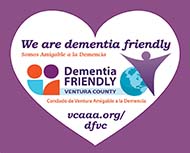By: Sherry Netherland, Director of Special Projects for Assisted Healthcare Services
As you have read in other blog posts, I am a big advocate of planning ahead. I can’t repeat that enough times. Plan ahead. One more for good measure – PLAN AHEAD. We are all aging. Even though 50 is the new 30, according to the latest census, by the year 2030 there will be approximately 71.5 million Americans over the age of 65. That will equal 20% of the population. The first Baby Boomers are now collecting Medicare. Soon, the Beatles will replace Jimmy Dorsey as the “pop” music preferred by seniors.
According to AARP statistics, 90% of seniors will desire to stay in their own homes. Even among those older adults who require day-to-day assistance of some kind, 82% will still prefer to stay at home.
Staying in your own home as you age is known, simply, as Aging in Place. Aging in Place can be broken down into three main categories:
- Aging in Place without immediate needs
- Aging in Place with progressive healthcare issues
- Aging in Place with a sudden change in health
AND, are you alone or living with someone? Aging can bring with it changes in our health that are so subtle that we don’t even pay attention to them because they don’t mean we are sick. For example, we might experience reduced flexibility, changes in our vision (especially a need for brighter lighting – as those of us who use a small flashlight to read a restaurant menu can attest), changes in our hearing, and loss of strength are just a few.
An entire industry has grown up around this concept, in part driven by the building industry. Those steps leading up to the front of your house that you used for exercise 20 years ago will not accommodate a wheelchair. That small cozy downstairs ½ bath you that you love is too cozy for grab bars.
AARP has identified the most common changes that older adults will find they have to make to their homes:
- Safety features such as non-slip floor surfaces (80 percent)
- Bathroom aides such as grab bars (79 percent)
- A personal alert system that allows people to call for help in emergencies (79 percent)
- Entrance without steps (77 percent)
- Wider doorways (65 percent)
- Lever-handled doorknobs (54 percent)
- Higher electrical outlets (46 percent)
- Lower electrical switches (38 percent)
Other major changes that might have to be implemented include moving the bedroom downstairs, obtaining telephone and television amplification devices, and increased lighting.
Planning ahead (there’s that phrase again) can go a long way to extending the time you can remain in your own home.
Outline those things that you cannot live without and then strategize ways you can keep those things in your life. Split the list into three columns to help sort them out. For example:
- Social Needs – Where and how do you socialize? Is family close by? Do you assist with the care of grandchildren? Do you have a bridge club that meets weekly? Do you travel?
How will you continue to participate if you can no longer drive?
- Physical Needs (exercise and MD appointments) – Do you play golf, belong to a walking club, a gym etc. Do you have frequent, regularly scheduled MD appointments or sporadic, occasional appointments?
- Environmental Needs – Do you do your own garden and mow your own lawn? Who cleans your house, does your laundry? Do you cook or eat out?
Many of the things that you have been doing for yourself, such as grocery shopping and yard work can be transferred to hired services as necessary. You can maintain your quality of life.
The best advice I can give you is to remain active to your maximum level of ability. Adapting a sedentary lifestyle will be your enemy. Activity will promote good mental and physical health and compress your years of dependency.
Assisted Healthcare Services can assist seniors in the Southern California counties of Los Angeles, Ventura, and Santa Barbara by answering questions about Aging in Place and accessing care assistance if necessary. Contact the local branch nearest you for help, Contact Assisted
Sherry Netherland is the Director of Special Projects for Assisted Healthcare Services, a Medicare certified, CHAP accredited home health agency with 7 branches in California and Arizona. She founded the Assisted Speakers Bureau and she speaks on a variety of healthcare related issues. To learn more about private duty nursing and how Assisted can help, www.assisted1.com/private_duty_care.







